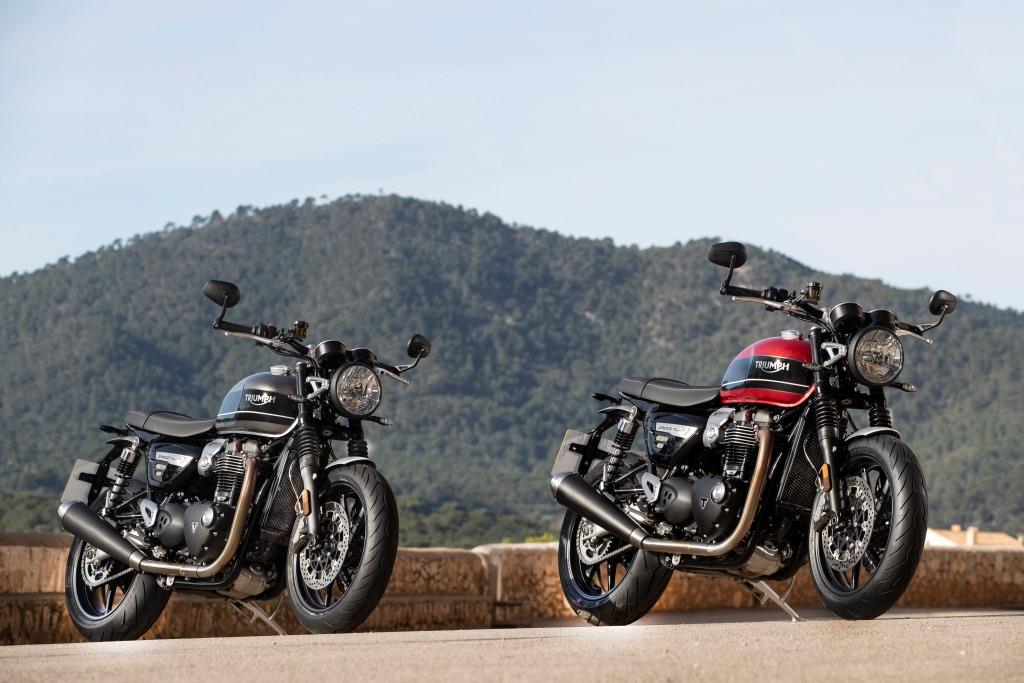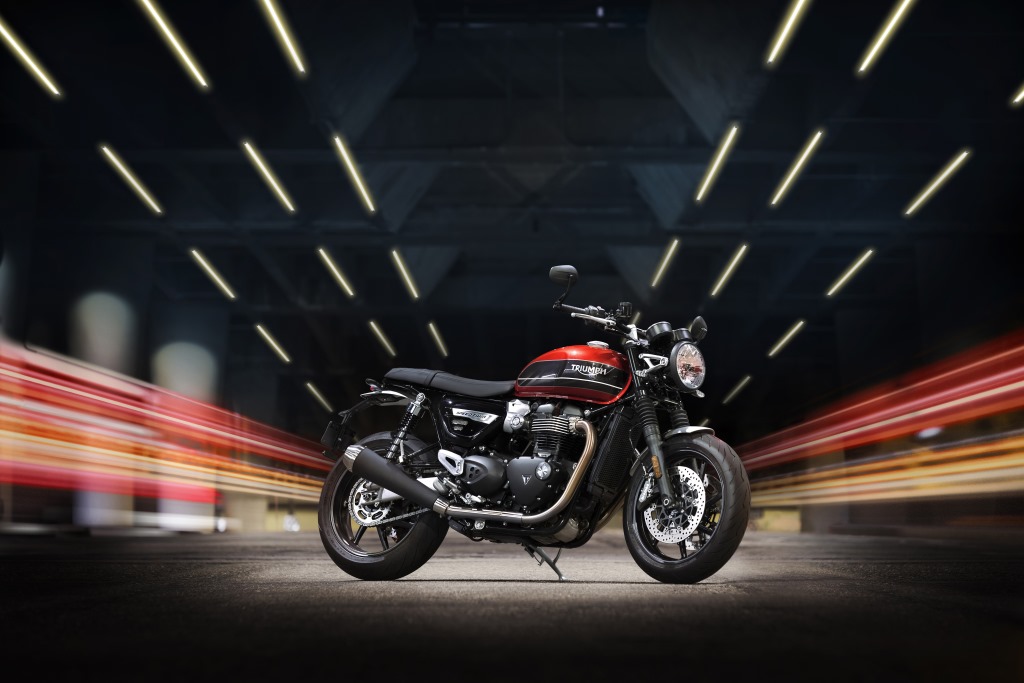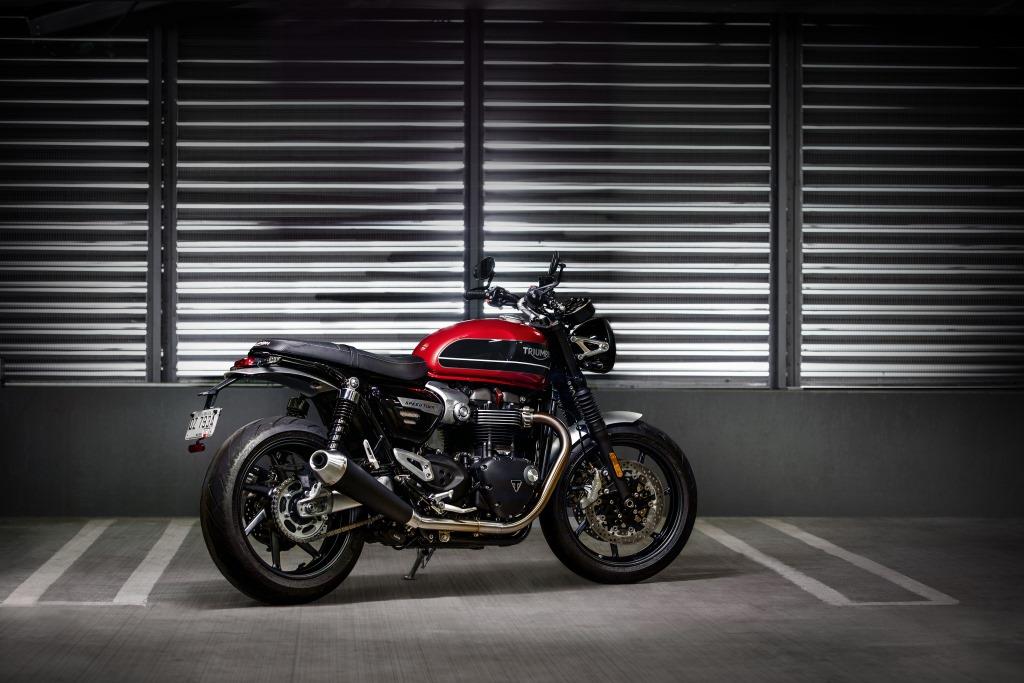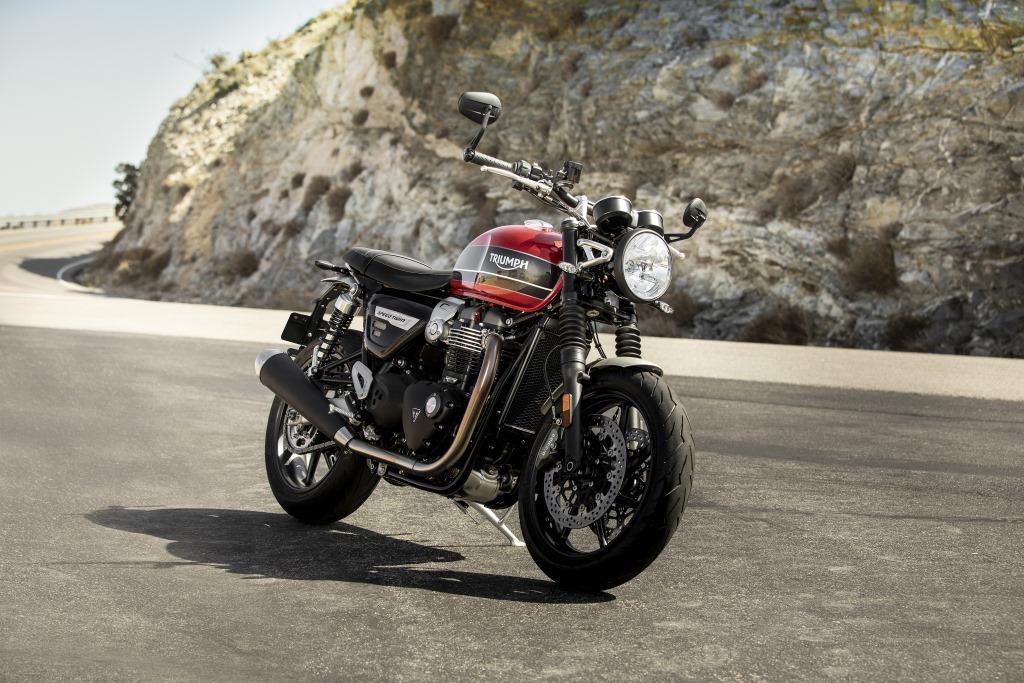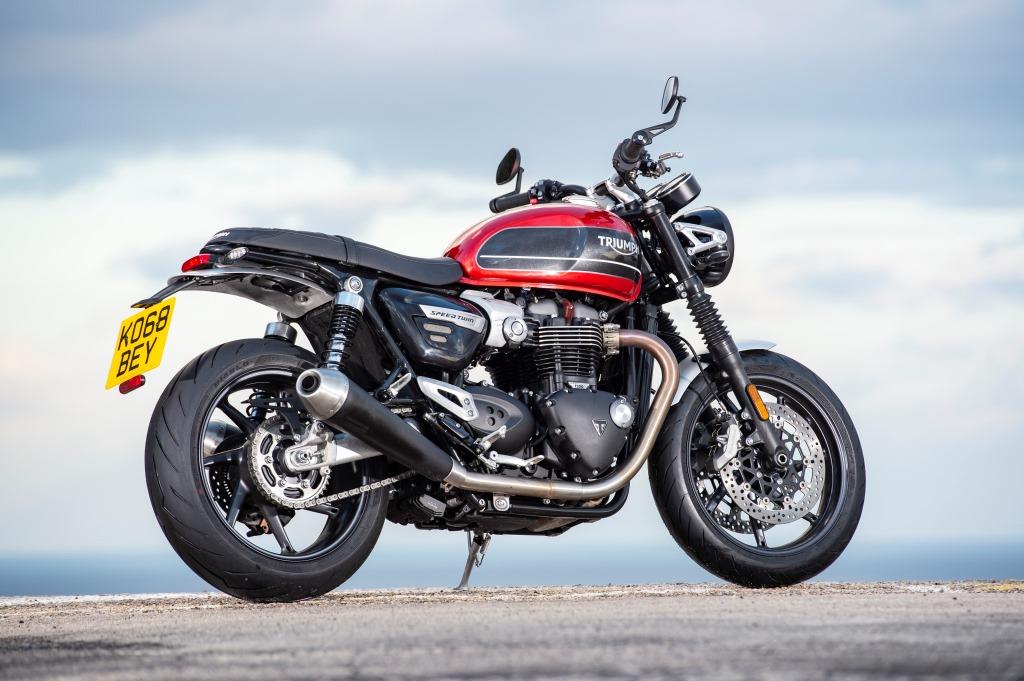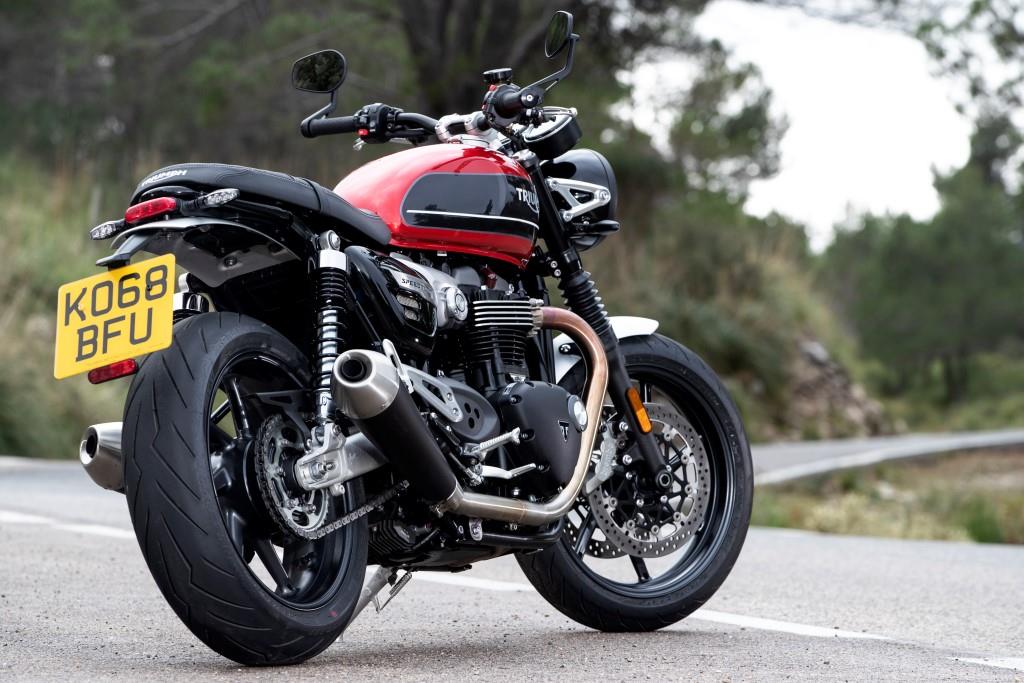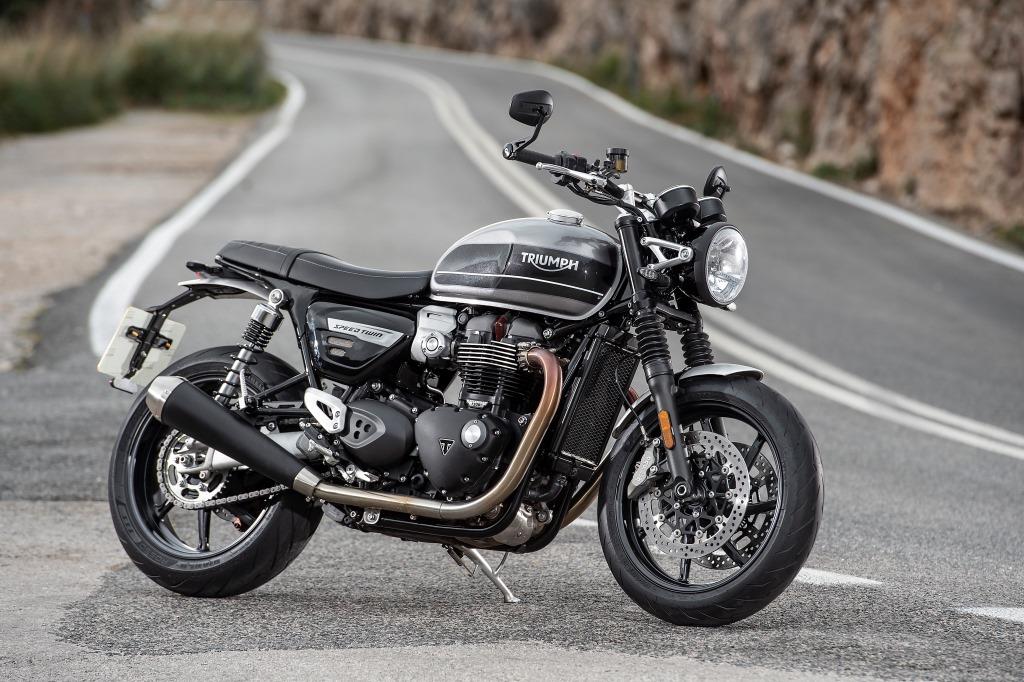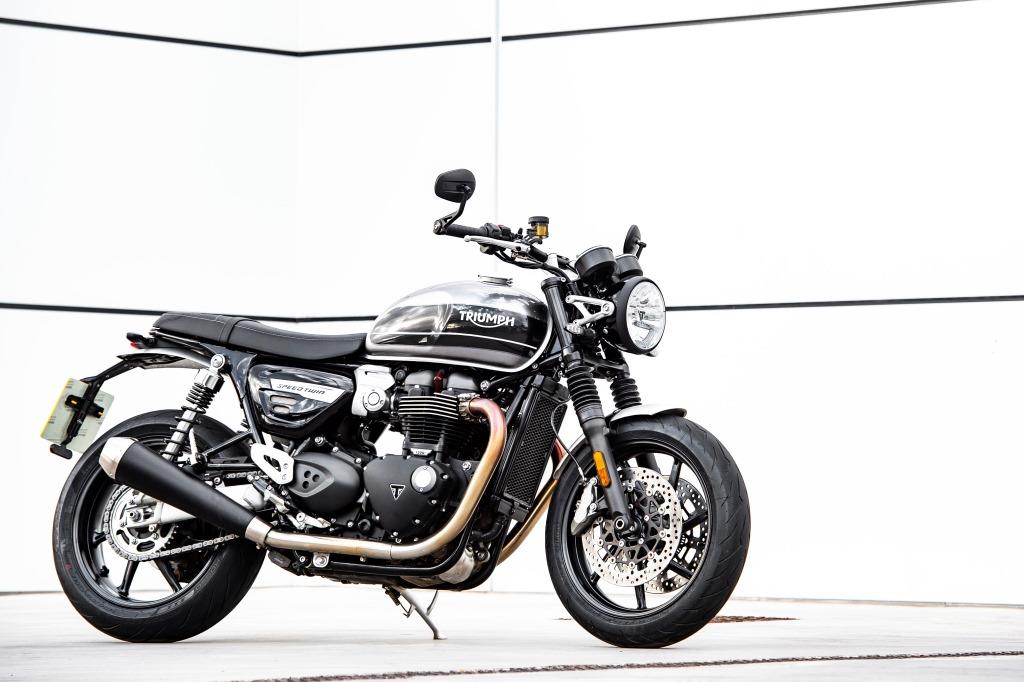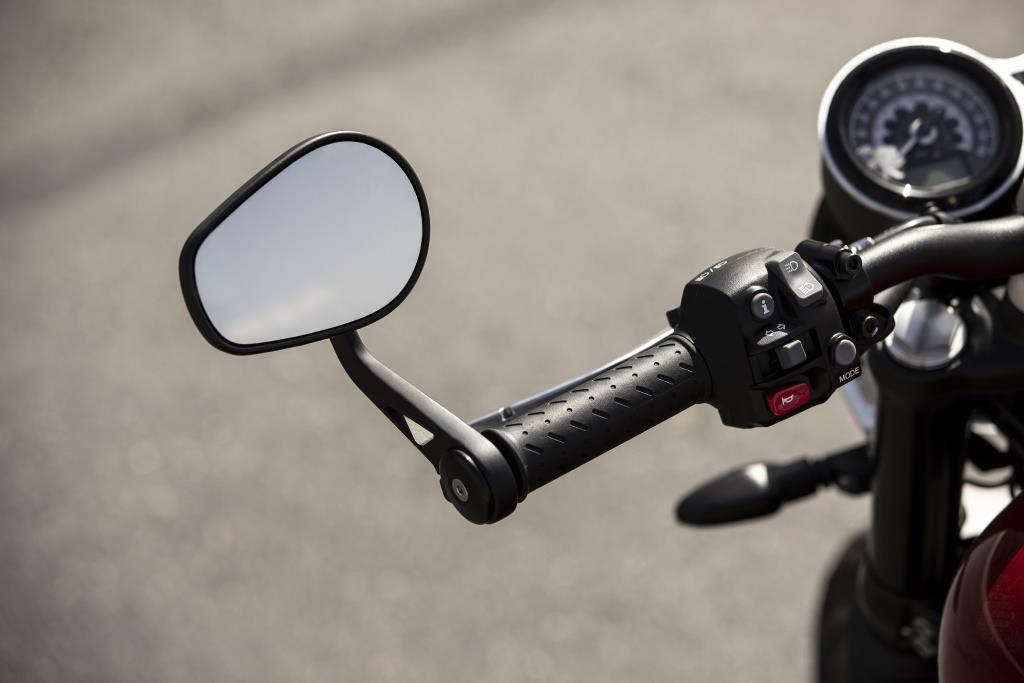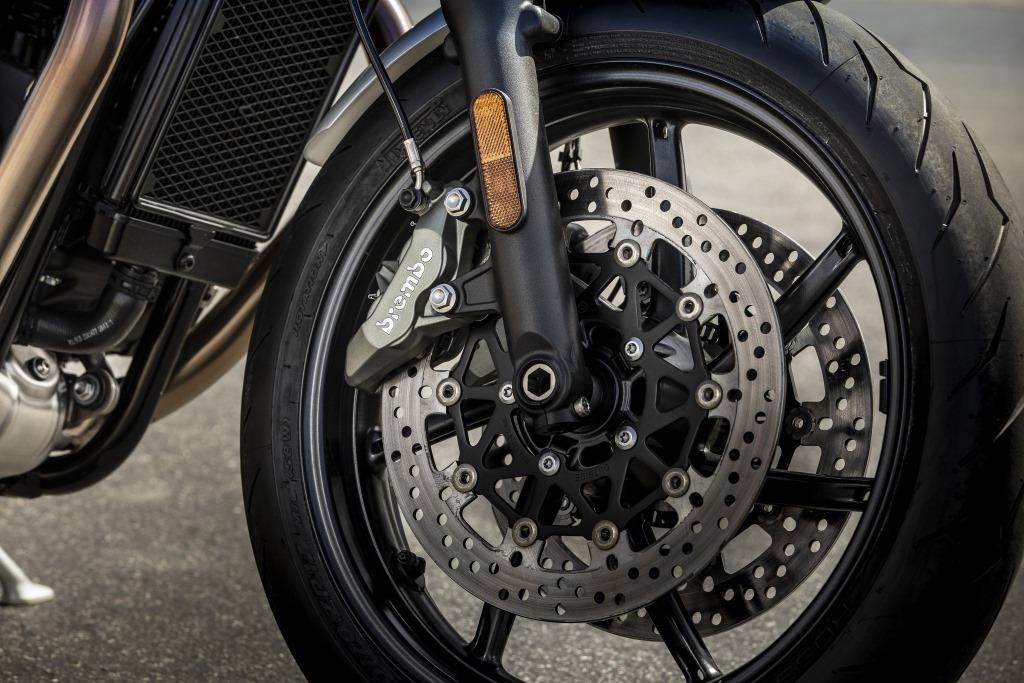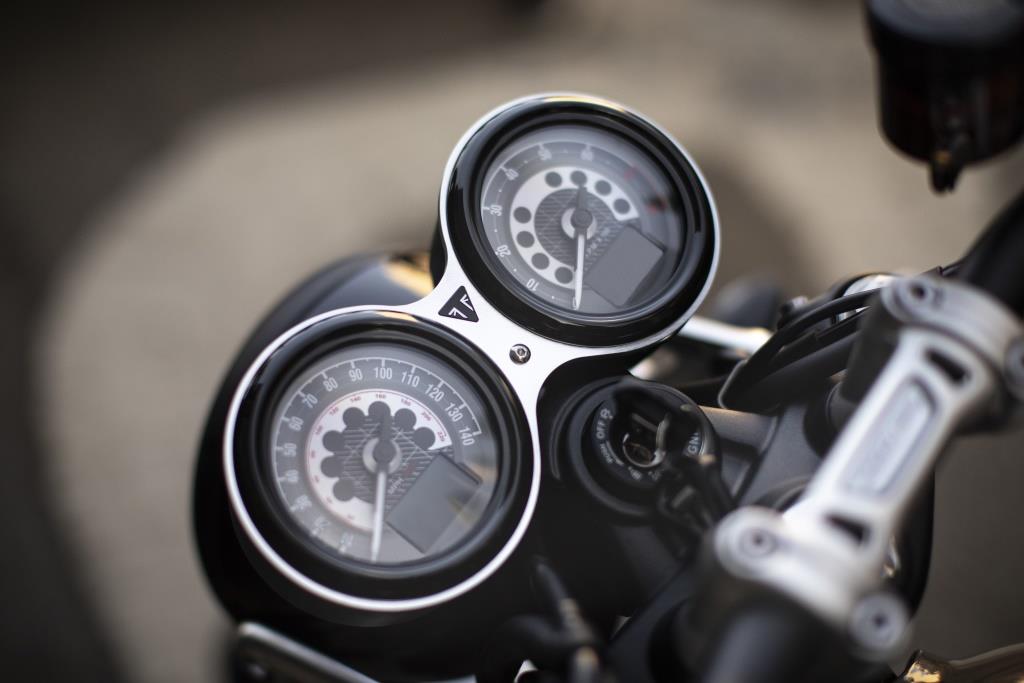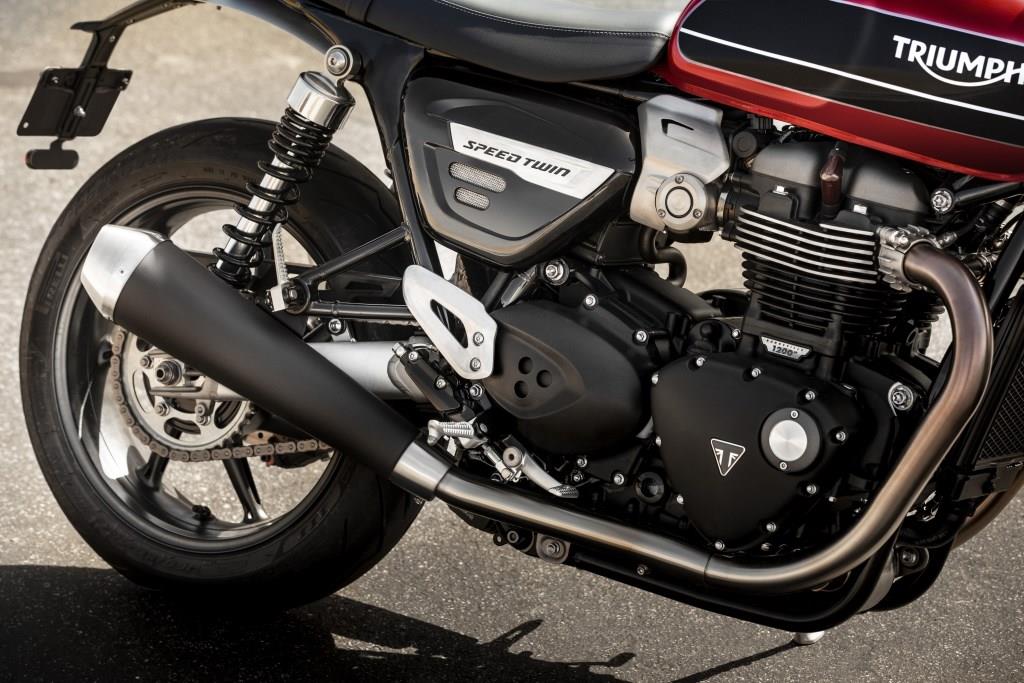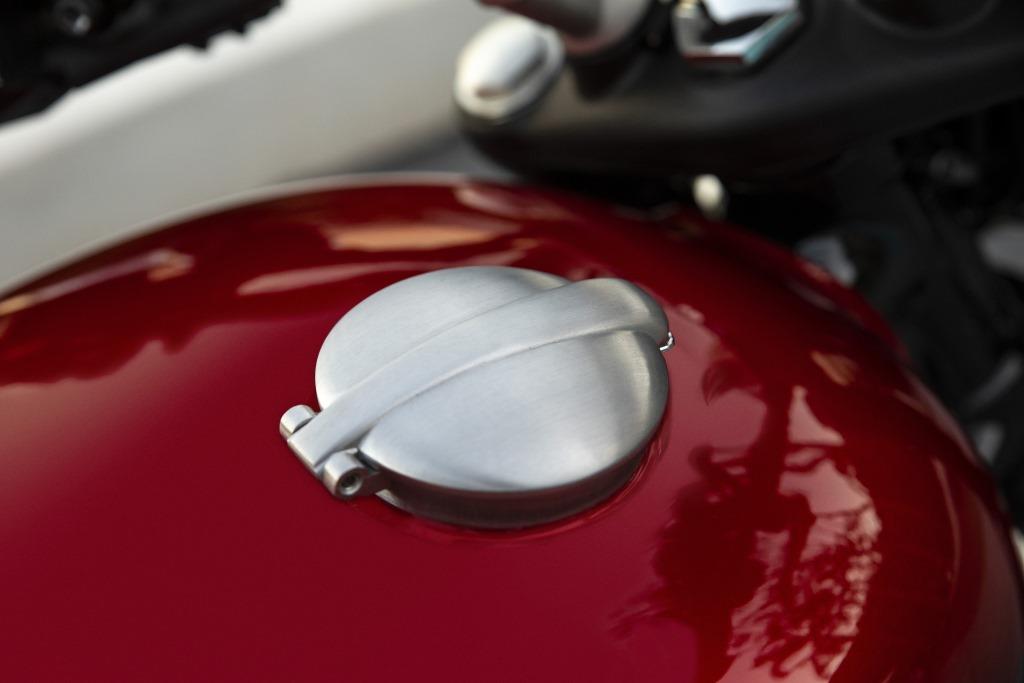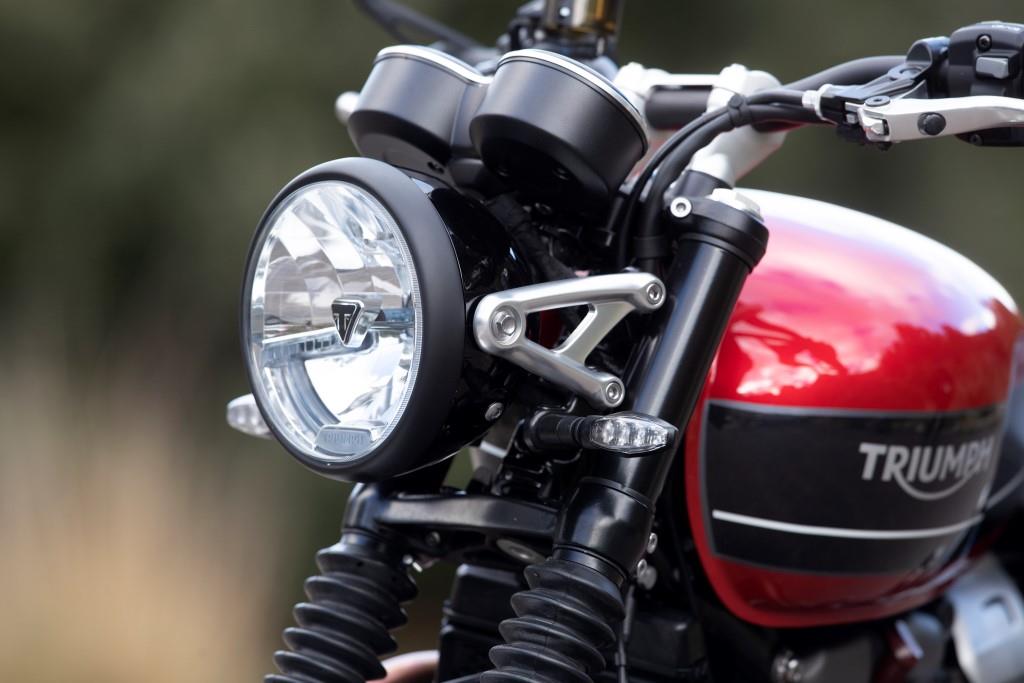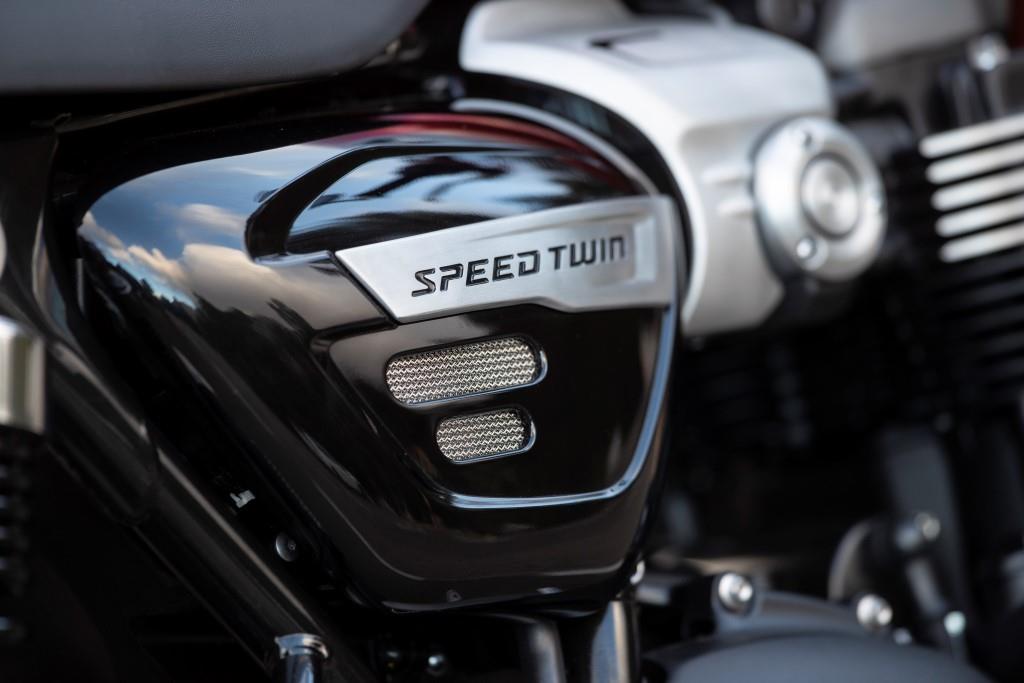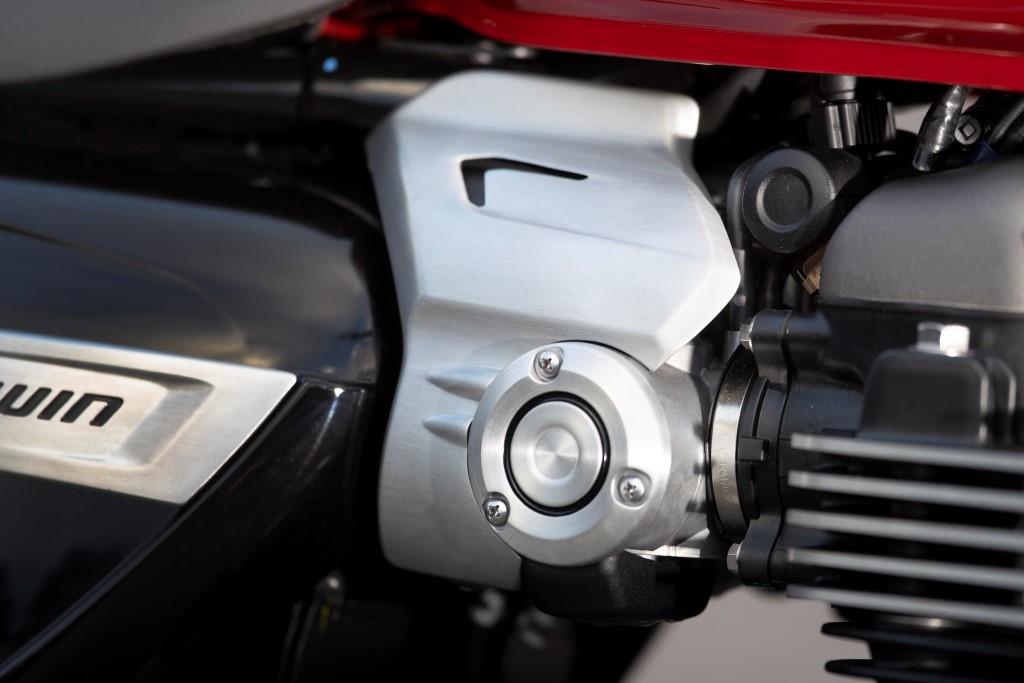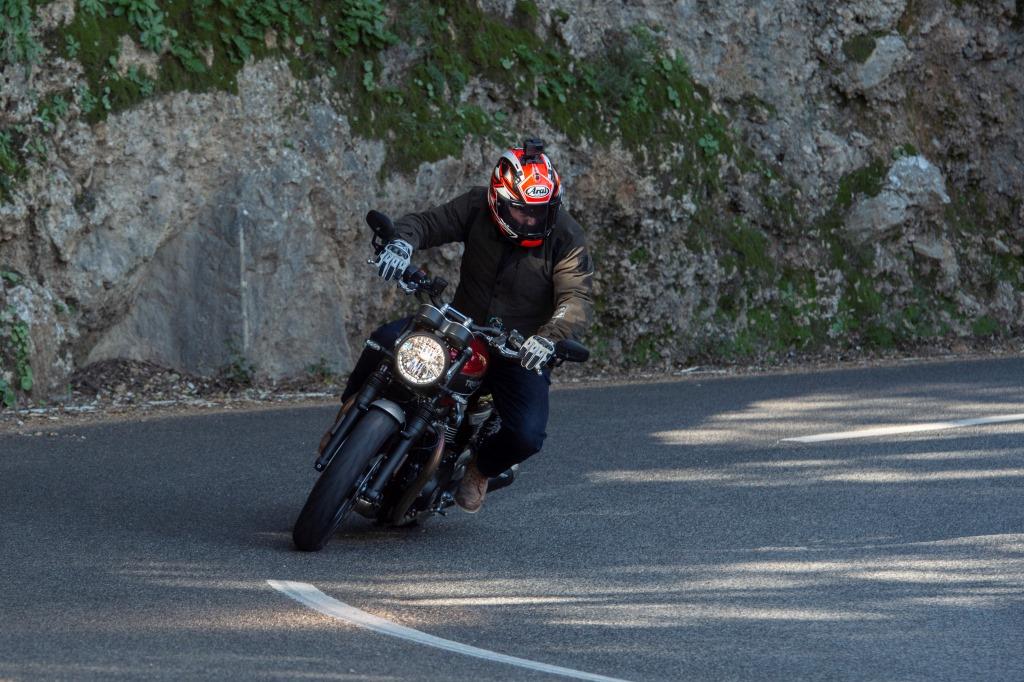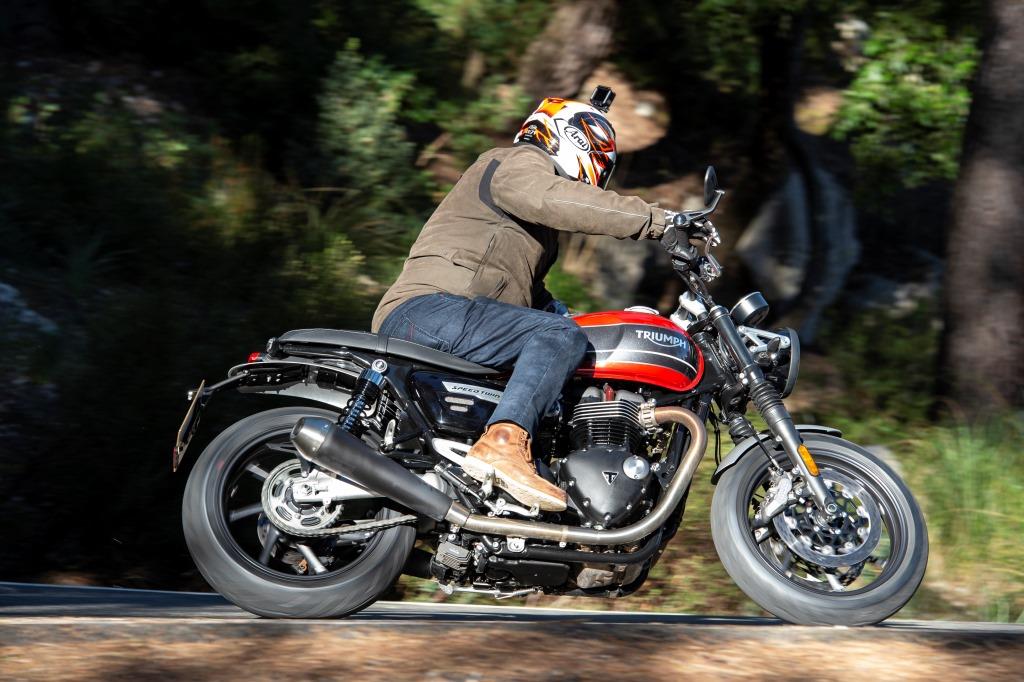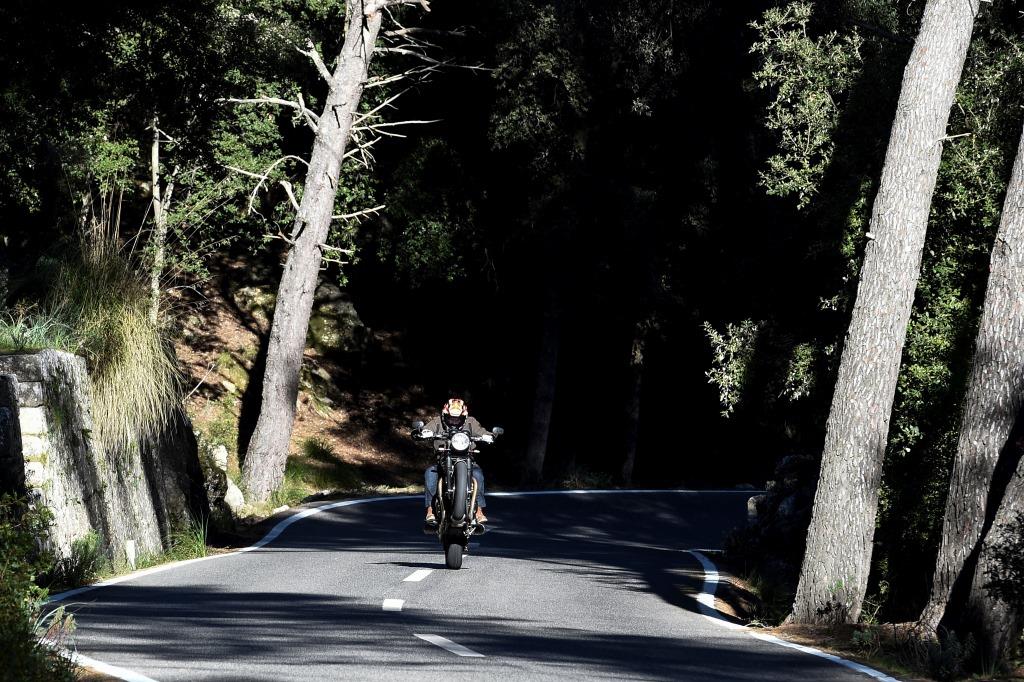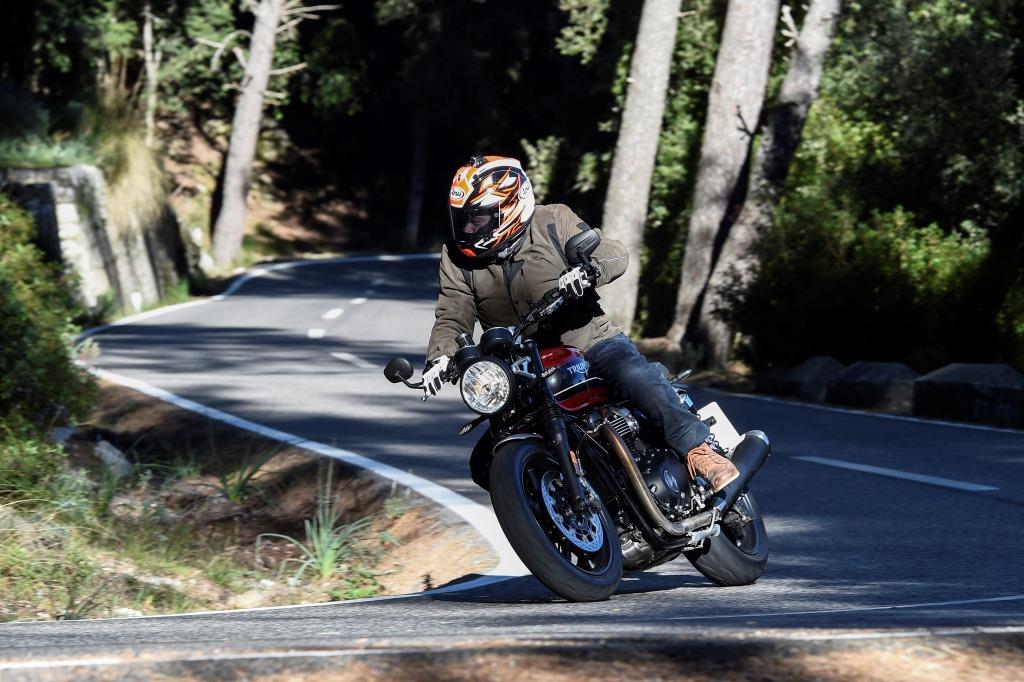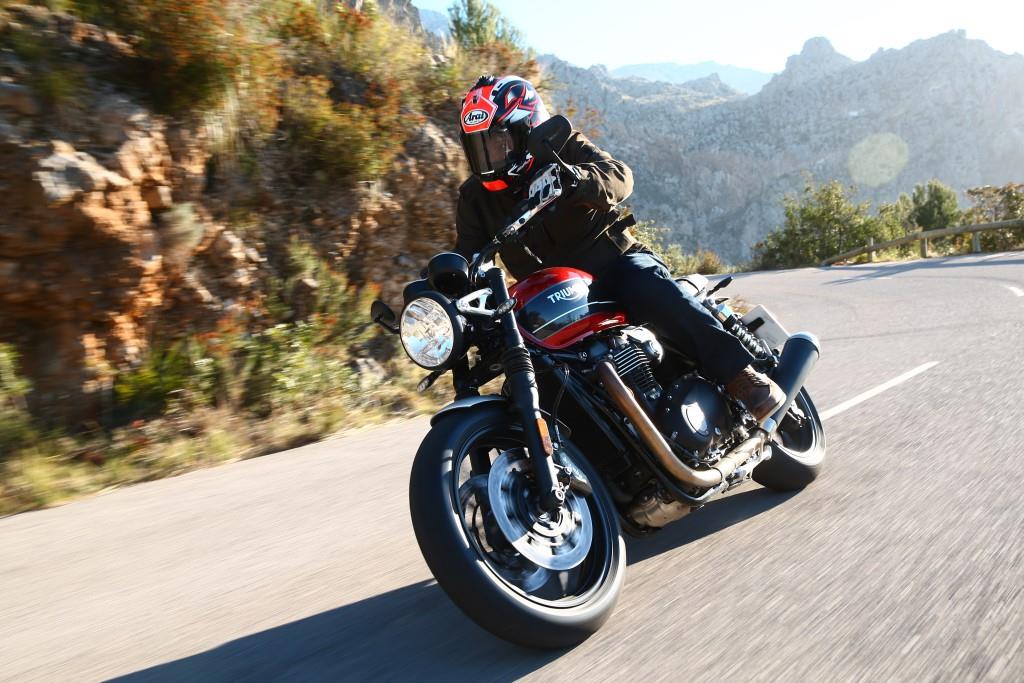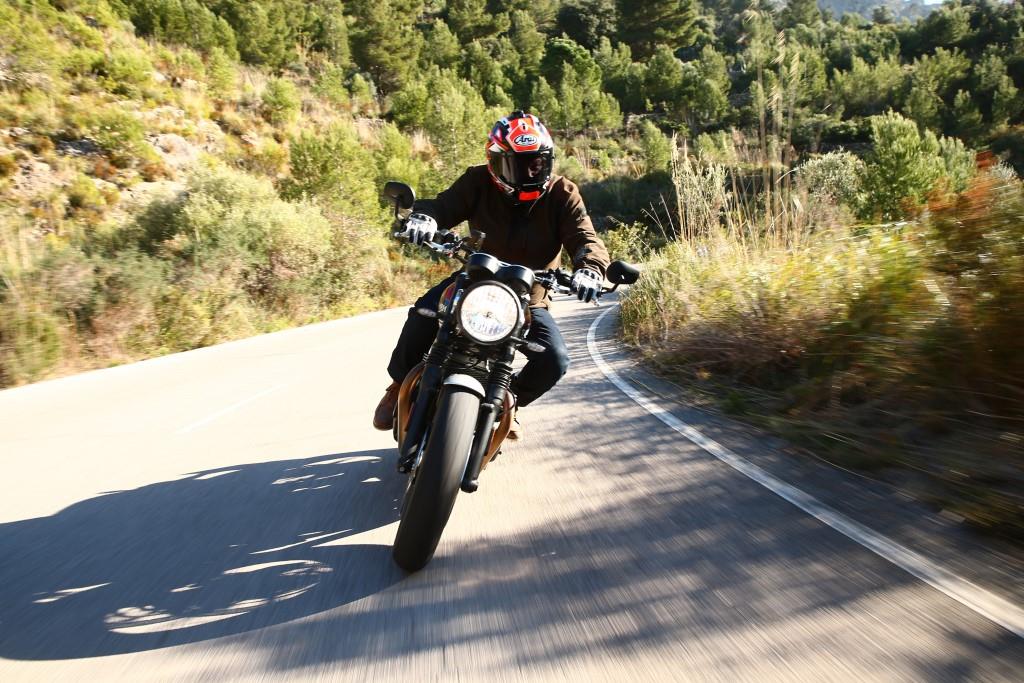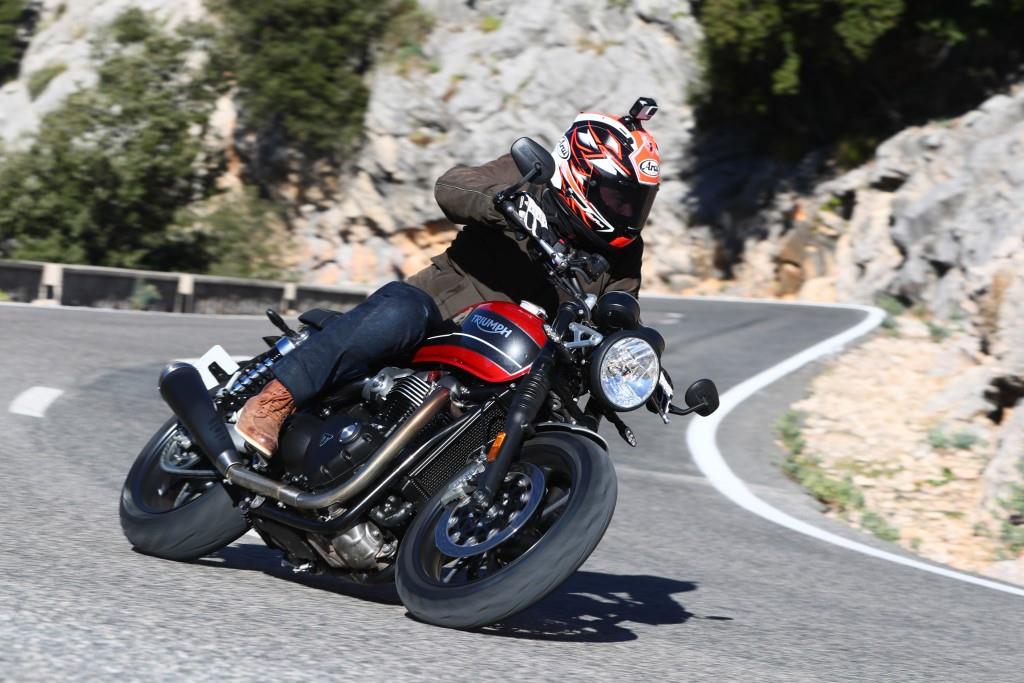Developing bikes is an expensive job. Designing a new engine, chassis, fuel injection system, rider aids packages – they all take millions and millions of pounds, yen, Euros, dollars. So it’s in a bike firm’s interests to make the most they can from that investment. Use those expensive foundations, with a few strategic design and styling tweaks, and you can get a whole new range of bikes to expand your range, then spread those development costs over a wider section of the market.
BMW’s done it for decades with its 1200 Boxer engines, as has Ducati with its various V-twin desmo motors. And Hinckley’s Triumph has done an incredible job with its 900 and 1200 parallel twin motors – which currently power around 13 different Modern Classic models between them (Street Twin/Scrambler/Cup, Bonneville T100 & T120, Bobber, Thruxton/R, Speedmaster, Scrambler 1200, Speed Twin, and all their variants).
And we’re in Mallorca to try out the very latest – the handsome new Speed Twin. Based around the foundations of the Thruxton and Bonneville 1200s, it’s a big old machine, especially when you’re sat next to it inside a hotel meeting room for a tech briefing. Long and low, it brings a real sense of presence to proceedings, even just sat on the sidestand. There’s plenty of nice touches to catch the eye – yes, that really is a proper brushed aluminium mudguard, rather than plastic, the headlight bracket is a high-quality ally forging, and the (sadly almost hidden) swingarm is the same aluminium design as seen on the Thruxton.
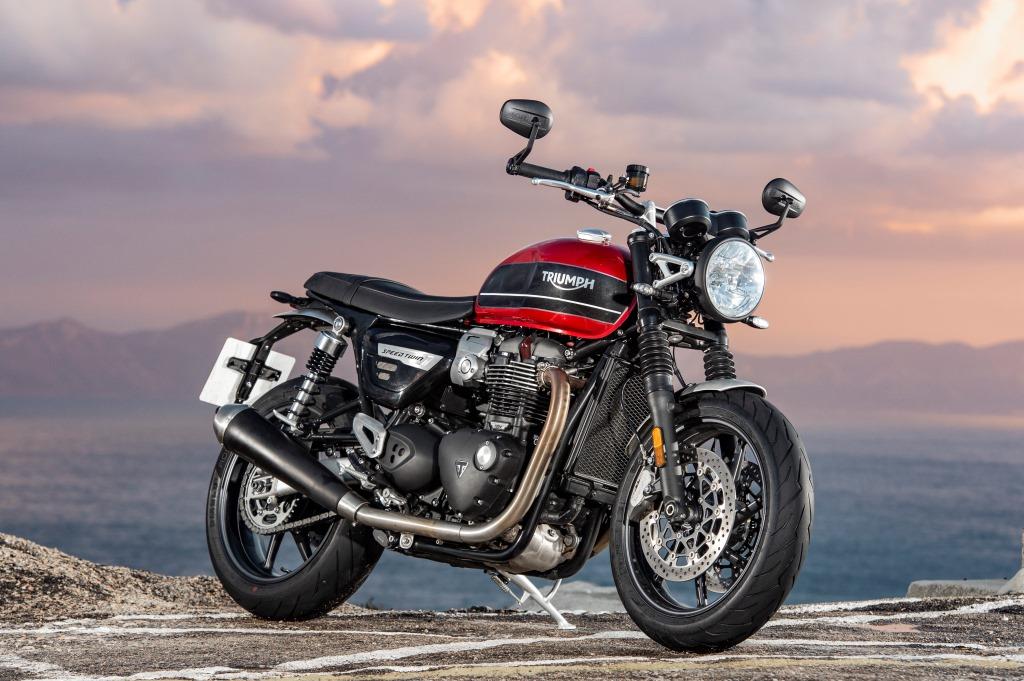
Said tech briefing underlines the impression that Triumph’s quite serious about this bike – up to a point. There’s a lightweight battery – but it’s a sealed lead-acid design rather than a ‘proper’ lightweight lithium unit. The rider aids packages is a notch down from the top-drawer machines, with no IMU and non-customisable riding modes. And while the suspension is all-new, there’s no adjustment on the front cartridge forks, and preload only on the rear KYB twin shocks.
The situation is made clearer when they announce the price though – just £10,500 in plain black, with a £300 surcharge for the versions with a red or silver hand-coachlined fuel tank. So – a good price for what looks like a base package with some strong performance features.
It all depends on the ride of course, and we’ve got a great environment for that today. Mallorca is a big old island – about twice the size of the Isle of Skye, or six times the area of the Isle of Man – and while it’s chilly first thing, there’s not a cloud in the sky. We kick off from our hotel on the east coast of the island, along some dull dual carriageway, before turning off and into the hills.
I’m enjoying the Speed Twin straight away. The riding position is comfy and commanding, with no messing about. A fairly low, well-upholstered bench seat, wide bars, low-slung pegs ticks all the boxes, and the view from the rider’s post is spot-on. Good bar-end mirrors, dual analogue speedo and tacho binnacles, with a pair of useful LCD readouts for fuel gauge, range, and all the usual stuff you need.
I’m loving the engine too. On paper, it doesn’t stand out as anything amazing – 96bhp from a 1200cc SOHC motor is down compared with the 110bhp boxer motor in the BMW RnineT, say, but it feels very strong at the bottom end. There’s a big wave of torque off idle, and though the rev limit is pretty low at around 7,000rpm, there’s enough going on in terms of upper mid-range to keep it interesting. It catapults you out of slower bends, makes monstrous overtakes in any gear, and can tickle up a great clutched second-gear wheelie should you be in the mood. It’s a world away from the sort of dull motors made by the likes of Harley-Davidson, and would properly knock the socks off a Sportster 1200.
The chassis is bags of fun too. The changes from the Thruxton layout aren’t massive, but Triumph engineers have focussed on weight loss. A lighter frame, wheels and engine components have cut 10kg compared with the Thruxton, with a lot of that being rotating mass. Lighter wheels, crank, clutch and brake discs all give an extra dividend in terms of agility, reducing the effort needed to change direction. So even on the near-U-turn hairpin bends up in the Mallorcan mountains, the Speed Twin is super-manageable – yet it’s also super-stable in faster sweeping bends. For a final handling bonus, there’s heaps of ground clearance as well – I never touched a peg down all day, despite the relaxed riding position and occasionally-daft riding pace.
The brakes are new, using conventionally-mounted Brembo four-piston calipers, and they work really well too. There’s a lot of initial bite, which I always like, and though I think there could be more in terms of ultimate power, they’re still more than up to the class standards. The back brake is also really strong, which, again, I like a lot. Pirelli Diablo Rosso III tyres are good once they warm up, and the unusual 160/60 section rear goes against the fashion for always fitting wider rear rubber. A narrower hoop on the back makes sense on a sub-100bhp machine, despite the fashion benefits of a wide tyre, and could be behind some of the positive steering benefits. It also cuts mass, and should be cheaper when it comes to replacement time.
The final part of the chassis puzzle is the suspension, and here the picture is a little mixed. The components – which look the same as those on the stock Thruxton model – are solid enough – KYB conventional forks and twin rear shocks, but there’s little in the way of adjustment. I didn’t mind the front fork, though some riders found them a bit ‘meh’ on the test, and the shocks were fine most of the time. I only had one wheel-control quibble, when the back end got a bit bouncy on a piece of rough tarmac mid-bend, and the rear tyre started to lose grip. The shocks also look wrong – they have cheap-looking chrome plating, which doesn’t match the rest of the brushed-alloy metalwork, and generally felt like a cost-cutting move too far. Would you bet against seeing a Speed Twin ‘R’ model in a year or two with Öhlins suspension and uprated brakes for a couple of grand more? Probably not.
The rear shocks were the only real hole I could pick in the Speed Twin though. After a full day riding round Mallorca, pushing as hard as you’re likely to on twisty back roads, the chassis package got a big thumbs-up. Add that to the grunty engine, the useful rider aids suite and the strong looks, and you get a genuinely impressive modern classic, with good road performance. Thinking of something like that this year? Then the Speed Twin should definitely be on your short list.
ENGINE
The Speed Twin uses the ‘Thruxton’ tuned 1200 Bonneville engine, which is aimed more at high power output than pure torque. The Bonnie makes just 79bhp, this ‘un has 96bhp. Compared with the stock Thruxton engine, we have a lighter clutch, magnesium cam cover and lighter engine cases – making it 2.5kg lighter.
FRAME
Triumph engineers have cut a stack of mass from the cradle type frame by using an aluminium lower cradle section, rather than the steel tubes used on the Thruxton and Bonneville. The hybrid frame design uses the same aluminium swingarm as the Thruxton, but uses a longer chain to give a 15mm longer wheelbase as stock.
SUSPENSION
KYB cartridge-type RWU forks and preload-adjustable twin shocks work well enough, without being massively impressive. Chrome finish on shocks looks a bit cheap.
BRAKES
Sweet axially-mounted Brembo four-piston calipers up front, twin-piston sliding caliper on the rear.
WHEELS
Triumph reckons these seven-spokers are some of the lightest cast alloy wheels you can find on a stock bike. Rear is a 5” rim, and uses a narrower 160-section tyre, further cutting rotating mass.
RIDER AIDS
A middle-of-the-road package of rider aids – non-switchable ABS, simple on/off traction control system, and three rider power modes – road, sport, rain. Easily navigated, but the rider modes can’t be customised.
EQUIPMENT/FINISH
High quality bodywork parts, including a cunning lockable ‘Monza’ fuel cap, brushed aluminium mudguards, sidepanel trims, headlight bracket, rearsets, and bar-end mirrors. Fuel tank on the red and silver models have hand-painted coachlines.
SPECS:
Price: £10,500 (black paint), £10,800 (red or silver paint)
Engine: 8v, SOHC parallel twin, 270° crank, liquid cooled, 1,200cc
Bore x stroke: 97.6x80mm
Compression ratio: 11:1
Max power (claimed) 96bhp@6,750rpm
Max Torque (claimed) 83ft lb@4,950rpm
Transmission: six speed gearbox, wet slipper assist clutch, chain drive
Frame: hybrid steel/aluminium cradle type
Front suspension: 41mm RWU KYB cartridge damping fork, unadjustable
Rear suspension: Aluminium swingarm, twin KYB shocks, preload-adjustable
Brakes: dual 305mm discs, four-piston Brembo calipers (front), 220mm disc, twin-piston caliper (rear), ABS.
Wheels/tyres: Cast aluminium/Pirelli Diablo Rosso III, 120/70 17 front, 160/60 17 rear
Rake/trail: 22.8°/93.5mm
Wheelbase: 1,430mm
Dry weight: 196kg
Fuel capacity: 14.5 litres
Rider Aids: switchable traction control, ABS, three standard rider power modes.
